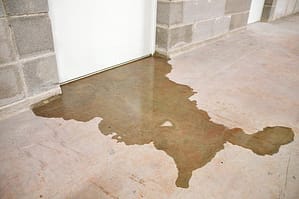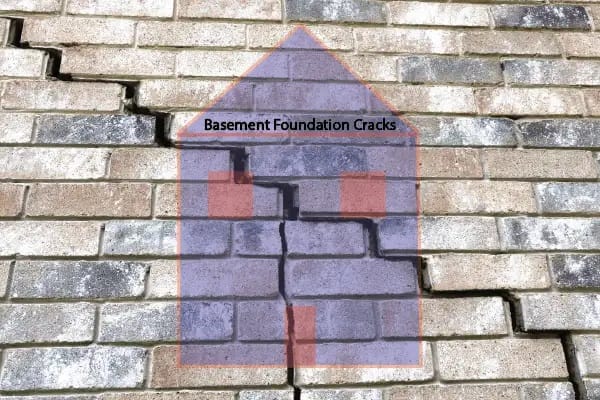Facts About Best Basement Waterproofing Uncovered
Facts About Best Basement Waterproofing Uncovered
Blog Article
The Greatest Guide To Best Basement Waterproofing
Table of ContentsSome Known Factual Statements About Best Basement Waterproofing An Unbiased View of Best Basement WaterproofingGet This Report on Best Basement WaterproofingBest Basement Waterproofing Can Be Fun For EveryoneRumored Buzz on Best Basement Waterproofing
What causes water damage concerns in your basement? Pipelines that line the inside of your wall surfaces are simply one instance of where water damages can occur.The soil and ground of your home is very important. If there is excessive water surrounding your home, however, it can push the soil right into your home and create the seals of your cellar to come to be jeopardized. Best Basement Waterproofing. when you see excess water in areas where it should not be, that is an excellent indicator that you have an issue
You use the finish with a heavy brush made with bristles swirled during application for an eye-catching, ended up appearance. Concrete water-proof finishings can't be applied to previously repainted surface areas Silicate-based concrete sealants, additionally recognized as densifiers, are also appropriate only for wall surfaces that haven't been repainted or sealed.
Due to the fact that these are permeating sealants, they can not flake off or peel, and you can have paint used over them. The American Eagle team might discover much more complicated reasons for your moisture issues; there are added options readily available. Plastic sheets and panels may be combined with interior basement drainage systems. They don't stop water from surviving the wall, but they do stop it from messing up points in the cellar.
How Best Basement Waterproofing can Save You Time, Stress, and Money.
A sump pump is needed to relocate water out of your cellar. Here are a few things the experts can set up to aid the waterproofing process: this is created for the walls of your cellar.

It also aids protect against the development of mold and mildew or mold, which can be a quite big carcinogen. Cellar waterproofing is an excellent method to get ahead of prospective water damage that might come your method. Do not be reluctant to contact neighborhood specialists, like those at American Eagle with any type of waterproofing inquiries you may have pertaining to what basement waterproofing appears like and a lot more.
The Best Strategy To Use For Best Basement Waterproofing
When it concerns protecting your home, among one of the most important actions you can take is cellar waterproofing. A completely dry basement not only guarantees a secure and healthy and balanced atmosphere for you and your household, but it also assists to stop costly water damages and mold and mildew development. In this post, we will certainly talk about the importance of cellar waterproofing, the benefits it offers, and exactly how you can set about securing your visit our website space.
By spending in basement waterproofing currently, you can assist to guarantee that your home maintains its worth and attractiveness in time. An additional benefit of basement waterproofing is that it can aid to lower your energy costs. A wet cellar can add to higher degrees of humidity in your house, which can make your heating and cooling system work tougher to maintain a comfortable temperature level.
When it involves basement waterproofing, there are several techniques that can be made use of to maintain water out of your area. These consist of interior sealers, outside waterproofing membrane layers, and water drainage systems. The ideal method for your basement will rely on variables such as the level of water invasion, the condition of your structure, and your spending plan.
In verdict, cellar waterproofing is a critical action in protecting your home from water damage, mold and mildew growth, and various other issues. By investing in cellar waterproofing, you can ensure that your area remains completely dry, risk-free, and healthy and balanced for you and your family. Not just does basement waterproofing offer satisfaction and security for your home, however it can also enhance its worth and conserve you cash on energy prices in the lengthy run.
What Does Best Basement Waterproofing Do?
Interior sealants are a kind of basement waterproofing method that entails applying a sealant to the inside of the basement wall surfaces and floorings. Water can permeate right into a cellar with splits, spaces, or permeable concrete, especially in locations where there is high groundwater or inadequate drainage. This can cause water damage and mold growth, in addition to damages to the foundation and architectural stability of the structure.
The sealer creates an obstacle that avoids water from permeating through the concrete. Nonetheless, this approach is only efficient for minor water damages and does not address the underlying root causes of the moisture. The major resource of the need for outside cellar waterproofing is water seepage from the beyond the structure wall surfaces.
It is an effective service for stopping water damage and preserving the architectural integrity of the building. It can be pricey and disruptive this to install, as it needs excavation around the foundation and may entail get more landscape design and various other fixings once the waterproofing is complete. However, this approach is the most reliable and resilient solution for stopping water seepage in the cellar.
The Greatest Guide To Best Basement Waterproofing

Report this page